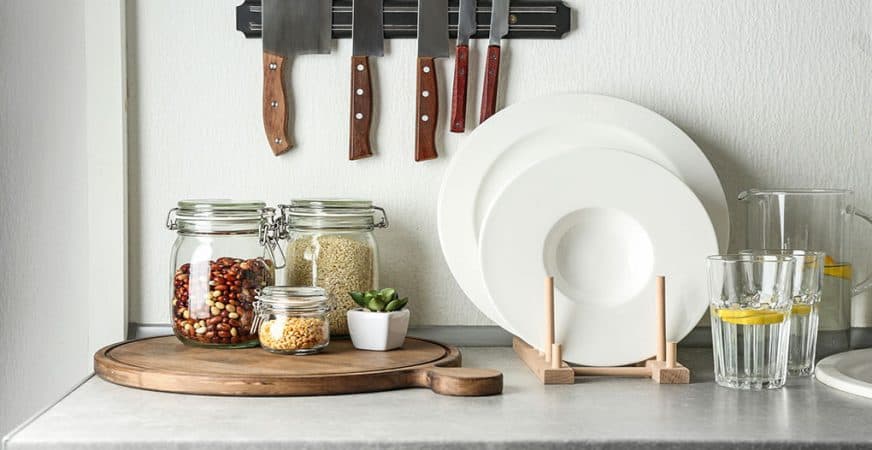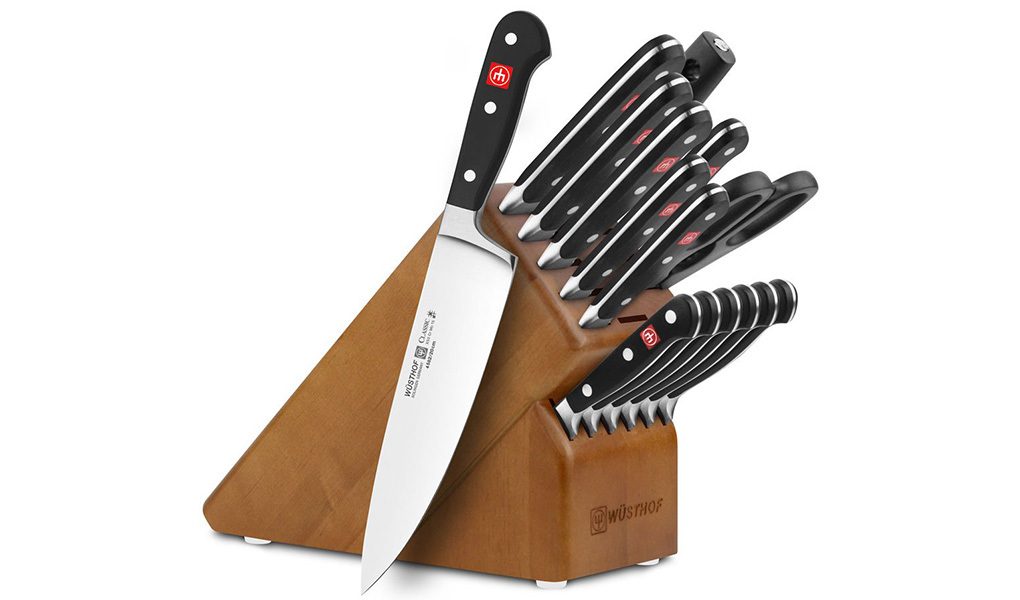
How to Store Knives in Kitchen
Once you’ve bought a good kitchen knife, you will want to store it properly so that your blades remain as sharp and unscathed for the longest time possible. The good news is that with proper storage, you can get the best from your knives.
In this article, we tell you about effective methods to store your knife so that when you want to use it, it’s on-point. Also, we discuss the wrong ways of storing kitchen knives so you can avoid them. Continue reading to learn more about how to store knives in kitchen.
Why should knives be stored safely?
The main reason why knives ought to be stored safely is for safety reasons. Also, proper storage of knives prevents premature dulling of the blades and of the knife itself.
Storing knives loosely in your kitchen drawer is not a good idea because it poses a grave danger to unsuspecting users. Also, blades can easily get nicked as they slide with other kitchen tools. Fortunately, there are a couple of options for storing your knives in a drawer.
What is the key to knife safety?
Keeping your knife or knives sharpened is the most effective way to ensure that they are safe. This is because using a dull knife for cutting means that you have to apply more force. The result is that the knife has more chance of slipping which increases injury risk.
Just using a knife sharpener or a sharpening stone will maintain original precision of your knife. You could also use sharpening steel for a knife that needs just a bit of touch up between one sharpening and the other.
Another thing that makes your blade safer to use is to know the level of sharpness that’s needed. To balance durability and sharpness, most knife blades feature a 20-degree angle on either side of the cutting blade.
If your dishes contain many soft ingredients, it’s recommended that you sharpen it to 15 degrees per side.
However, this narrower angle requires to be sharpened more frequently and may reduce your knife’s overall durability. But if you will be cutting ingredients that are harder texture-wise, keep the blade 20 degrees per side.
How do you store knives in the kitchen?

There are mainly three options of storing your knives properly. The option you choose will depend on your preference available space and the type of kitchen knives you have. We discuss these below:
1. Kitchen knife block
A knife block is the most popular storage choice for blades. Most knife sets often come with a block. However, you can also buy an empty block for storing your knives.
A knife block provides a safe storage option and allows the keeping of all your blades in one place. Also, it can help maintain your knives’ edge for longer.
- If you have knives of different sizes, you need to opt for a custom knife block. Note that some knife blocks are shaped diagonally to allow the easy sliding of knives in and out. This helps keep their blades sharp while they are sliding.
- Another option is slotless block complete with pre-sized inserts if you have oddly-shaped knives. In case you have uncommonly sized knives, always opt for a custom knife block with the capability of holding and protecting all the knives that you require.
2. Using a Drawer Insert



Kitchen Drawer Insert
The advantage with this option is that each knife will have its slot and the sharp edge is protected entirely from friction or jostling.
First, determine your drawer’s dimensions, and ensure that they don’t exceed the width or length of your drawer.
Inserts need to comfortably fit into the drawer without requiring to be forced in. Also, make sure they don’t fit too loosely either to prevent the insertion from shifting around and causing the knives to knock against the sides of their protective slots.
This may lead to unnecessary scratching and consequent dulling of the blades.
3. Wall-mounted magnetic strips



Some people prefer wall-mounted magnetic strips because they save on the kitchen counter space. These strips generally have a strong magnet that runs along the width of the knife and is surrounded by two slightly raised metal strips that run down the center.
- This option is not only typically less expensive to buy and install; you can easily access it while you are cooking and fast to sanitize whenever you want to.
- It offers one of the best methods of storing your kitchen knives. If you put and remove them from the strip properly, you will make very minimal contact with the sharp edge. This is advantageous in the sense that it prevents dulling.
How to Use a Knife Block Correctly
Because most knife blocks have a blade suspended by the handle, nothing hurts the blade once it is safely placed in its slot. However, it is natural to drag the blade above the bottom of the slot while dropping the knife in or even pulling it out.
One way to correct this is to insert the kitchen knife blade-side up. Alternatively, make an effort of pressing the blunt side of the blade up against the top of the slot every time you get the knife.
Are magnets bad for knives?
By and large, there is no problem storing your knives on a magnetic strip. There is no evidence to show that it causes knives to dull faster. However, if you put the knife on the magnetic strip lazily, especially where the edge touches first, it isn’t good for the knife.
Why you shouldn’t put knives in the dishwasher
By nature, the dishwasher detergent tends to be very abrasive. This, coupled with the banging around that takes place during the wash process, is sure to make your knife dull faster. Also, it poses a danger to the person that unloads the dishwasher.
Wrong Way to Store Your Knives in kitchen
It’s very wrong to toss your knife in the drawer containing other kitchen gadgets. You might happen to grab the sharp edge of the knife, and if that happens, you will find yourself in the emergency room without knowing.
Another reason is that it leads to the jostling of the knives against other metal objects which can damage them. It can cause them to become dull faster or even cause notches and nicks that will eventually require repairing.


